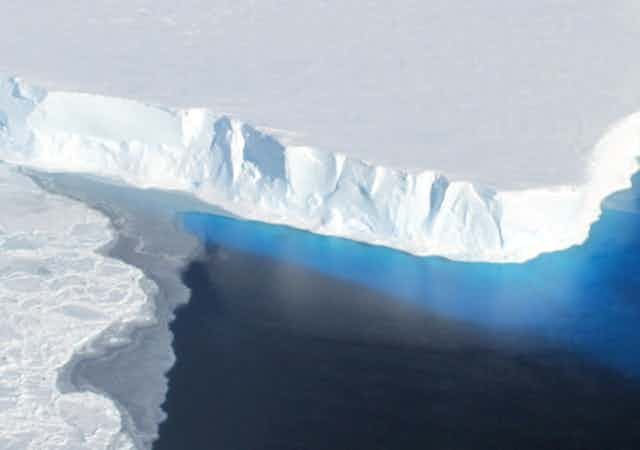New Evidence From Beneath The ‘Doomsday’ Glacier

The Thwaites Glacier, located on the west coast of Antarctica, is gaining increasing attention due to its potential impact on the future of our planet. Known as the “Doomsday Glacier,” it has earned this nickname because its melting could contribute to a dramatic rise in sea levels—up to 3 meters—submerging coastal cities like New York, Miami, and London. Despite its ongoing retreat, Thwaites is currently responsible for only a small portion of sea level rise, around 4%, losing about 50 billion tons of ice annually. However, its eventual collapse could lead to catastrophic consequences for global coastal regions.
A recent series of studies by the International Thwaites Glacier Collaboration (ITGC) has provided new insights into the glacier’s disintegration. These findings challenge previous understanding of the glacier’s behavior, revealing the complexity and unpredictability of the process. In 1945, the US Navy first identified Thwaites through aerial surveys. The glacier stands 1 kilometer tall, making it taller than the Burj Khalifa by over 170 meters, and is the widest on Earth at 120 kilometers. Thwaites forms part of the West Antarctic Ice Sheet, a mass of ice nearly three times the size of Texas.
Antarctic ice is generally retreating as ocean temperatures rise, and Thwaites is retreating faster than most glaciers, contributing to about 4% of sea level rise. However, despite its ongoing melting, experts previously suggested that its collapse was not an immediate threat. The glacier’s rapid retreat is primarily driven by its location and the unique geography of the region. The West Antarctic Ice Sheet sits below sea level, which makes it more vulnerable to ocean currents that can destabilize the ice. If Thwaites fails, the ocean could penetrate deeper into Antarctica, potentially triggering a chain reaction that would collapse the entire ice sheet.
Research indicates that over the past 25 years, Antarctica’s ice sheets have lost approximately 8 trillion tons of ice, with Thwaites responsible for about 1 trillion tons of that loss. If Thwaites completely melts, it could raise sea levels by about 65 cm, and if it triggers the collapse of the entire West Antarctic ice sheet, sea levels could rise by as much as 3 meters. This would have disastrous consequences for coastal cities worldwide, as about 10% of the global population lives less than 10 meters above sea level.
The evidence for this rapid melting comes from various studies, including sonar, drilling, and satellite imagery. One intriguing finding is the discovery of “pinning points” on the glacier’s surface, which slow the flow of ice as it moves toward the sea. Over the past few decades, the size of these pinning points has decreased, indicating that the glacier is thinning at an alarming rate—about 4 meters per year. More concerning, however, is the retreat of the glacier’s grounding line—the point where the ice sheet touches the seabed. This line has retreated by 14 kilometers since 1992, allowing warm ocean water to flood beneath the glacier, accelerating its melting.

New research using a hot water drill to study the melting beneath the ice revealed unexpected results. While the melting process is slower than anticipated in some areas, certain sections of the glacier are breaking apart more rapidly than expected. These findings highlight the complexity of the situation and demonstrate that melting and retreat behave differently from what scientists previously thought.
Despite some slower melting in certain areas, the overall trend is still one of destabilization. The formation of large crevasses and rifts in the glacier is allowing warm water to infiltrate, further weakening the structure of the ice sheet. The long-term fate of Thwaites appears inevitable, with a full breakdown likely within the next 50 to 150 years. While scientists continue to refine their understanding of the glacier’s behavior, the pressing question remains: What can be done to mitigate the catastrophic effects of its collapse?
Some researchers are exploring geoengineering solutions, such as deploying massive underwater curtains to block warm seawater from reaching the glacier or creating air bubble curtains to slow the melting process. While these ideas are still in the conceptual stage and would require significant funding, they might be more cost-effective than the projected $14 trillion annual cost of building coastal defenses to protect cities from rising sea levels.
In conclusion, the Thwaites Glacier is a critical factor in understanding the potential impacts of climate change. While there are still many unknowns about the glacier’s future, the evidence suggests that the ongoing melting of this massive ice sheet poses a significant threat to global sea levels and coastal populations. Immediate action and continued research are crucial in addressing this looming crisis.








